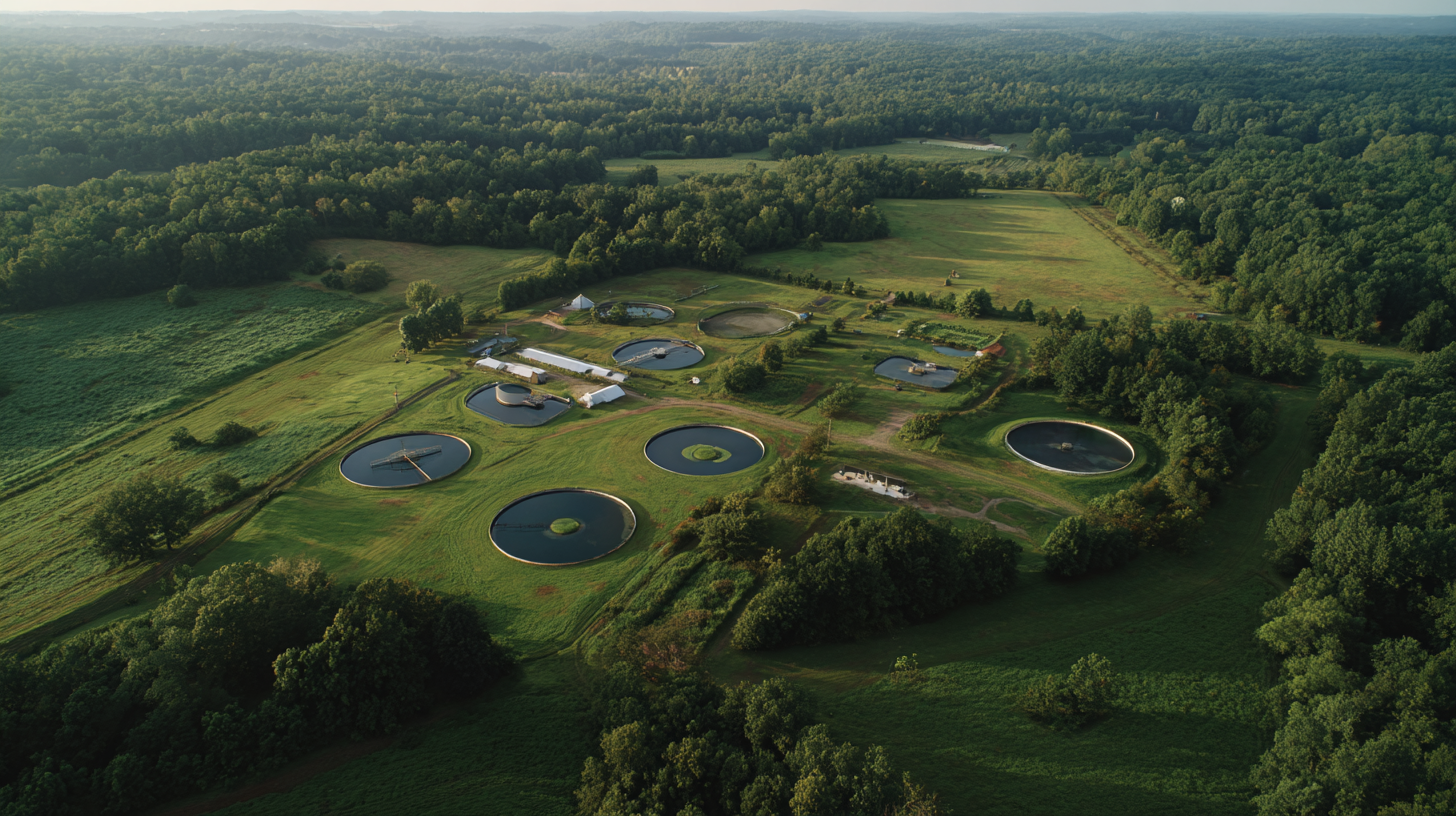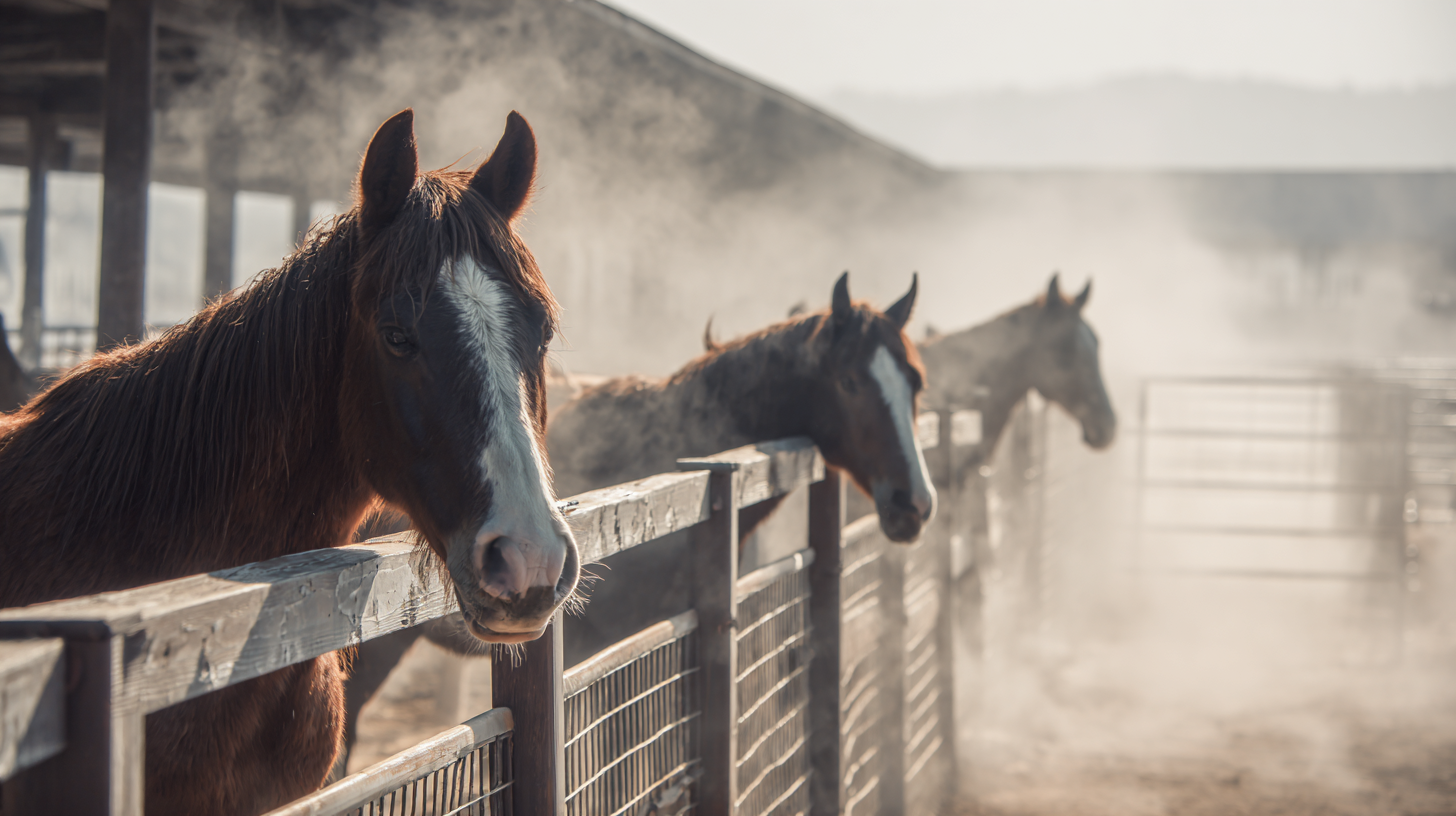In the ever-evolving landscape of agriculture, maintaining optimal farm health is paramount, particularly through effective farm disinfection practices. As diseases and pathogens pose increasing threats to livestock and crops, the need for innovative approaches has become more critical than ever. This article delves into the intersection of technology and best practices in farm disinfection, unveiling valuable tips that empower farmers to enhance their sanitization efforts.

By implementing cutting-edge solutions alongside traditional methods, farmers can significantly reduce the risks associated with infectious agents and ensure a healthier environment for their animals and crops. Join us as we explore the latest trends and practical advice that not only streamline farm disinfection processes but also promote sustainable agricultural practices for a thriving future.
Innovative disinfection technologies are transforming the landscape of farm health management. According to a report from the Food and Agriculture Organization (FAO), around 20% of farm productivity is lost due to diseases and pests. Implementing advanced disinfection practices can significantly reduce these losses. Techniques such as electrostatic spraying and ultraviolet (UV) light applications are now proving to be highly effective in eliminating harmful pathogens. For instance, studies have shown that UV light can eliminate up to 99.9% of bacteria and viruses, ensuring a safer environment for livestock and crops.
**Tips:** One effective strategy is to schedule regular disinfection protocols, especially during high-risk seasons. Incorporating automated systems can streamline the process, making it less labor-intensive while providing consistent results. Additionally, integrating real-time monitoring systems can help farmers track the effectiveness of disinfection efforts and modify their strategies accordingly.
Another noteworthy technology is the use of biosecurity mats and antimicrobial coatings on high-touch surfaces, which have been found to reduce microbial contamination significantly. A report from the Journal of Infection Control indicates that these methods can decrease infection rates in agricultural settings by 30%. Farmers adopting these innovative solutions not only improve farm health but also enhance overall productivity.
**Tips:** Investing in staff training on the latest disinfection techniques can also pave the way for successful implementation and adherence to safety standards, further promoting a culture of health and hygiene on the farm.
| Disinfection Technology | Application Method | Effectiveness (%) | Coverage Area (sq ft) | Environmental Impact |
|---|---|---|---|---|
| Ultraviolet (UV) Light | Surface & Air Disinfection | 99.9% | 500 | Low |
| Electrolyzed Water | Spraying & Immersion | 95% | 1000 | Minimal |
| Fogging Disinfectants | Aerosol Application | 98% | 2000 | Medium |
| Ozone Treatment | Gaseous Disinfection | 99% | 1500 | Moderate |
| Biological Agents | Surface Treatment | 92% | 800 | Low |
 Effective biosecurity practices are crucial in minimizing disease transmission on farms. Understanding the pathways through which diseases spread allows farmers to implement targeted measures that significantly reduce risks. Essential practices include controlling access to farming areas, ensuring that personnel are trained in hygiene protocols, and using appropriate protective equipment. Furthermore, regularly disinfecting equipment and facilities can eliminate pathogens that may linger, protecting both livestock and crops.
Effective biosecurity practices are crucial in minimizing disease transmission on farms. Understanding the pathways through which diseases spread allows farmers to implement targeted measures that significantly reduce risks. Essential practices include controlling access to farming areas, ensuring that personnel are trained in hygiene protocols, and using appropriate protective equipment. Furthermore, regularly disinfecting equipment and facilities can eliminate pathogens that may linger, protecting both livestock and crops.
Another vital aspect of biosecurity is the management of animal movements. Introducing new animals to a herd or flock should be carefully controlled, with quarantine measures employed to monitor the health of incoming livestock before integration. Additionally, maintaining clean water sources and monitoring feed can prevent the introduction of toxic substances or pathogens. By focusing on these essential practices, farms can not only enhance their health and productivity but also contribute to the overall wellbeing of the agricultural sector by reducing potential outbreaks.
In the modern agricultural landscape, maintaining farm health through effective disinfection practices is crucial. Data-driven approaches have emerged as invaluable tools in enhancing the efficiency of these disinfection protocols. According to a report by the U.S. Department of Agriculture, farms that integrate data analytics into their sanitation processes can reduce pathogen load by up to 30% compared to traditional methods. By harnessing real-time data and predictive modeling, farmers can make informed decisions about when and how to disinfect their facilities, ultimately leading to healthier livestock and reduced risks of disease outbreaks.
The use of analytics extends beyond mere pathogen control; it can significantly streamline resource allocation and labor management. The Agriculture and Food Research Initiative highlights that farms employing data analytics can improve operational efficiency by 25%, allowing for better scheduling of disinfection cycles and more effective use of disinfectants. This not only minimizes waste but also enhances the overall effectiveness of cleaning interventions. By understanding the patterns of pathogen spread and identifying high-risk areas, farmers can tailor their disinfection strategies, ensuring a more robust and proactive approach to farm health.
In agriculture, the selection of disinfectants is crucial for maintaining farm health and preventing the spread of pathogens. Evaluating the chemical efficacy of disinfectants involves understanding their active ingredients, mode of action, and suitability for various applications on the farm. When selecting disinfectants, farmers should prioritize those that are effective against a broad spectrum of microorganisms, including bacteria, viruses, and fungi. This broad-spectrum efficacy ensures comprehensive protection, reducing the risk of disease outbreaks.

Best practices for selecting disinfectants also encompass considerations such as residue tolerance, safety for animals and crops, and environmental impact. Farmers should opt for products that align with their specific needs, taking into account the type of livestock or crops being treated. Additionally, consulting data from reliable sources on the disinfectant’s performance under different conditions can provide invaluable insight. By systematically evaluating these factors, agricultural professionals can make informed decisions that enhance farm health and ensure effective disinfection practices.
The integration of digital tools into farm health monitoring marks a significant advancement in effective disinfection practices. Traditional methods of monitoring sanitation often rely on manual inspections and time-consuming record-keeping, which can lead to inconsistencies and delays in response to potential health threats. However, with the emergence of real-time tracking technologies like IoT sensors and mobile applications, farmers now have immediate access to critical data on disinfection efficacy, allowing for more proactive management of farm health.
These digital tools enable farmers to monitor various factors, such as surface sanitation levels, microbial counts, and environmental conditions that influence the effectiveness of disinfection protocols. By employing automated tracking systems, farms can optimize their cleaning schedules and ensure that disinfection measures are compliant with industry standards. This innovative approach not only enhances the overall health of livestock and crops but also fosters a safer food supply chain, ultimately benefiting consumers and producers alike. The transition to digital monitoring represents a shift towards more agile and data-driven farming practices, reinforcing the importance of technology in safeguarding agricultural productivity.
This chart illustrates the percentage of farms implementing various disinfection practices over the past year, highlighting the growing trends in farm health monitoring.






